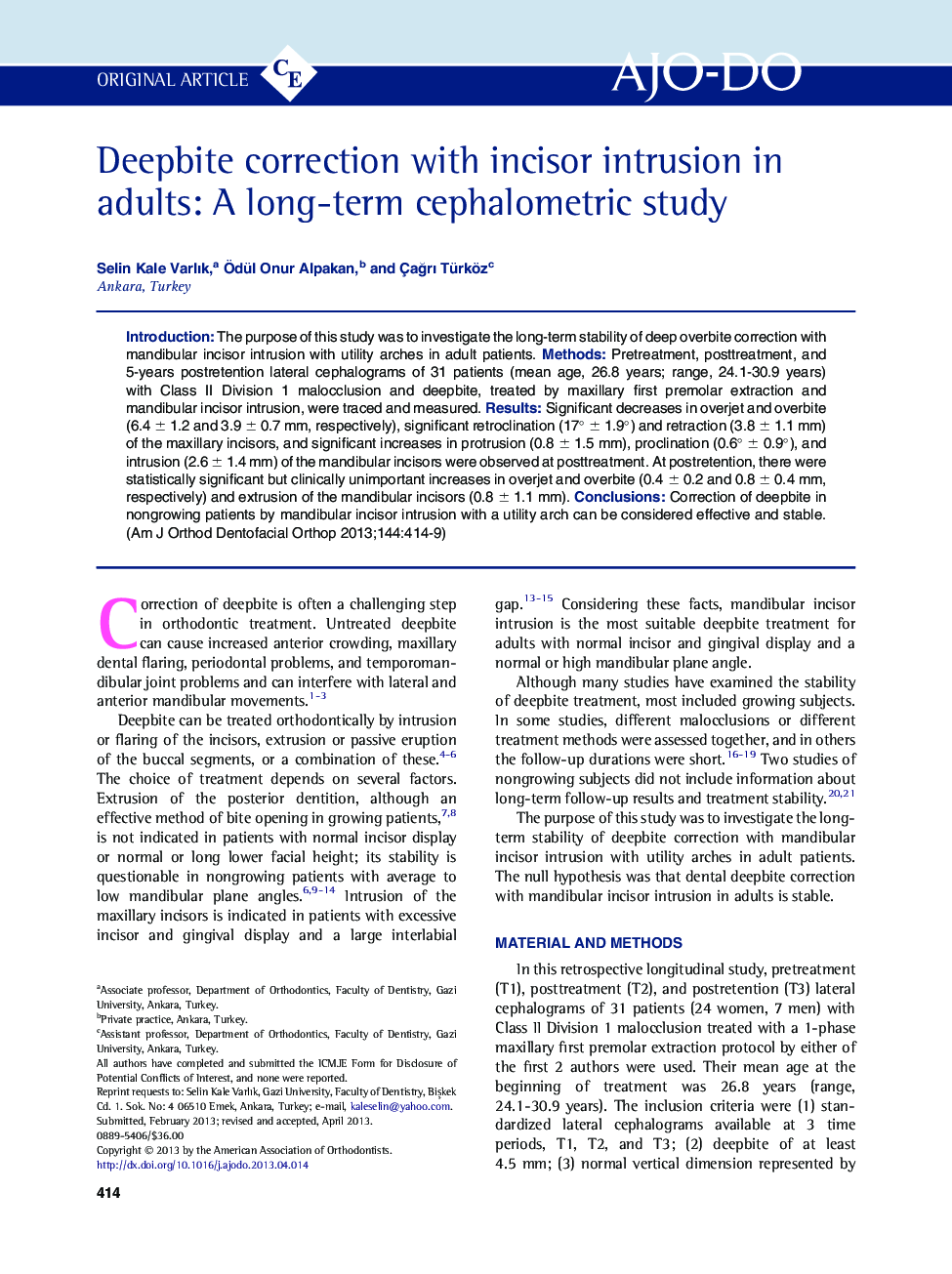| Article ID | Journal | Published Year | Pages | File Type |
|---|---|---|---|---|
| 3117048 | American Journal of Orthodontics and Dentofacial Orthopedics | 2013 | 6 Pages |
IntroductionThe purpose of this study was to investigate the long-term stability of deep overbite correction with mandibular incisor intrusion with utility arches in adult patients.MethodsPretreatment, posttreatment, and 5-years postretention lateral cephalograms of 31 patients (mean age, 26.8 years; range, 24.1-30.9 years) with Class II Division 1 malocclusion and deepbite, treated by maxillary first premolar extraction and mandibular incisor intrusion, were traced and measured.ResultsSignificant decreases in overjet and overbite (6.4 ± 1.2 and 3.9 ± 0.7 mm, respectively), significant retroclination (17° ± 1.9°) and retraction (3.8 ± 1.1 mm) of the maxillary incisors, and significant increases in protrusion (0.8 ± 1.5 mm), proclination (0.6° ± 0.9°), and intrusion (2.6 ± 1.4 mm) of the mandibular incisors were observed at posttreatment. At postretention, there were statistically significant but clinically unimportant increases in overjet and overbite (0.4 ± 0.2 and 0.8 ± 0.4 mm, respectively) and extrusion of the mandibular incisors (0.8 ± 1.1 mm).ConclusionsCorrection of deepbite in nongrowing patients by mandibular incisor intrusion with a utility arch can be considered effective and stable.
